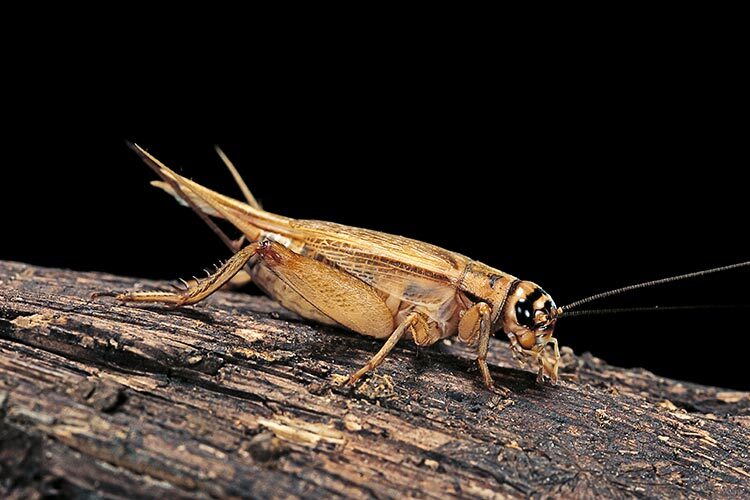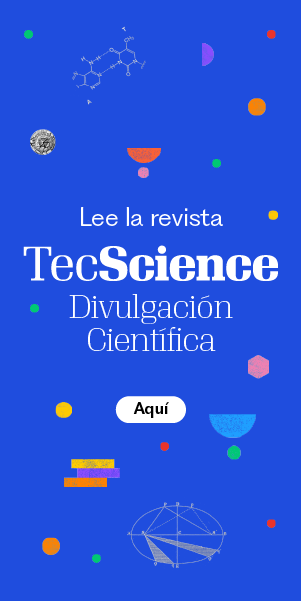By Marisela Rodríguez Salvador
Have you ever wondered how the most innovative companies keep up with what is going on around them? How do they detect strategic moves by their competitors promptly?
The world we live in today has made it easier to access large amounts of data; however, this does not necessarily mean we have the right information at the right time. To compete successfully, companies need tools that allow them to process large amounts of information and transform it into results that can be fed into strategies for the future.
Competitive Technology Intelligence (CTI) consists of an ethical and legal process of monitoring the competitive scientific and technological environment, using various techniques for collecting, analyzing, and disseminating information to transform it into a result that is relevant for making decisions linked to research, development, and innovation (Tsuchimoto & Kajikawa, 2022; Maungwa & Fourie, 2018; Du Plessis & Gulwa, 2016; Bergeron & Hiller, 2002).
Evolution of CTI and ways to use it
This discipline emerged in the mid-1980s, mainly with the establishment of the Society of Competitive Intelligence Professionals (SCIP) in the United States. It quickly acquired a great deal of importance worldwide, especially in highly industrialized countries, while gradually gaining ground in less developed nations. Currently, several companies consider it a fundamental tool for developing products, processes, and services with greater certainty and market impact since it allows companies to identify changes in the environment that could present opportunities or threats to their competitive performance.
It is also important to note that CTI does not mean information in isolation. The question is to know where to look, how to look for it, and even more how to generate useful results for strategic decision-making. This includes, for example, anticipating movements in the environment, being able to develop a new product that is successful in the market, being able to incorporate a new ingredient into food to make it more functional and nutritious, developing a new process for a hybrid vehicle battery, and so forth.
The advantage of this area is its multi-disciplinarity, making it applicable in different industrial and service sectors.
CTI is evolving by leaps and bounds with the advent of the digital era. Significant efforts have been devoted to increasing computational capabilities and promoting the development and management of databases, as well as algorithms for extracting, analyzing, and processing information.
Artificial Intelligence is creating a revolution in all areas. Recently, Gartner (Groombridge, 2023) identified the top 10 technology strategies in 2023, the second of which is Applied Observability. This refers to the use of Artificial Intelligence to analyze hundreds of business data points and make recommendations that serve to make better and faster decisions for the future. As can be seen, this strategy is aligned with the focus of CTI activities.
Thanks to digitalization, information analysis is becoming more efficient and agile, and future applications include the ability to move from traditional processing (in one dimension) of structured information such as scientific papers, patents, reports, etc. to the processing of unstructured information from documents and social networks with images and even sound (involving several dimensions) so that a company can improve its strategic planning processes more comprehensively. Moreover, it will be able to translate all this into a metaverse where, through neural networks, different future scenarios can be derived to make the best decisions about innovation in products, processes, and services.
Undoubtedly, the evolution of these types of tools will give a much more complete perspective to the discipline of CTI shortly.
Competitive Technology Intelligence Application
To date, there is no standard methodology for this activity. However, the study “Integrating Science and Technology Metrics into a Competitive Technology Intelligence Methodology” by Rodríguez Salvador and Castillo Valdez (2021) proposes an eight-step CTI methodology (see Figure 1):
1) Project planning with the definition of objectives, activities, and times, as well as the people involved and their functions.
2) Identification of sources of information, which may be primary (based on direct observation, as well as interaction with experts in the area being analyzed) or secondary (information documented through reports, databases, scientific articles, patents, etc.).
3) Design a strategy for searching for information.
4) Compilation of the most relevant information.
5) Analysis of the information through tools such as Scientometrics, which consists of analyzing the behavior of scientific literature: number of publications, number of citations, author collaborations, etc. (Baker et al., 2022; López Rodríguez & Ceballos, 2022; Mingers & Leydesdorff, 2015; Michán & Muñoz Velasco, 2013).
- Patentometrics, in which patents are analyzed as indicators of invention to identify trends and predict future products and/or technological processes. (Rodríguez Salvador & Castillo Valdez, 2021; Speziali & Nascimento, 2020).
- Technology mapping that, through visual representations, shows future scenarios where science, technology, and market converge.
- Alternative metrics (altmetrics), useful for measuring social impact through interactions on social networks and websites (Sahu & Poduval, 2022).
6) Expert feedback.
7) Validation and delivery of final results.
8) Decision making.

Examples of Competitive Technology Intelligence
This discipline has contributed to revealing trends, progress, and innovation opportunities in the global technological environment in different sectors.
For example, it has been used in industries such as pharmaceuticals, construction, agriculture, and food in Japan (Tsuchimoto & Kajikawa, 2022), in spheroid fabrics as building blocks (Rodríguez Salvador et al., 2022), in 3D bioprinting in Latin America (Rodríguez Salvador et al., 2019), additive manufacturing oriented to orthopedic devices (García García & Rodríguez Salvador, 2018), in 3D bioprinting with dental applications (Rodríguez Salvador & Ruiz Cantú, 2018), in the 3D bioprinting landscape (Rodríguez Salvador et al., 2017) and even in financial institutions (Du Plessis & Gulwa, 2016), as well as in the very study of this discipline through technology roadmaps (Zhang et al., 2016).
Discover Competitive Technology Intelligence at the Tec
Mexico is steadily progressing in training, research, and links with industry in this area. For example, in 2001, the Competitive Technology Intelligence for Innovation Unit was founded at Tecnológico de Monterrey’s School of Engineering and Sciences, Monterrey campus, where it has contributed to the dissemination of this discipline. Hundreds of undergraduate and graduate students have been trained in this area, along with strategic innovation planning processes being supported in more than 100 organizations in manufacturing, health, finance, education, and more.
The first project developed in this Unit was at the request of a 100% steel company and consisted of identifying trends in the automotive sector for the steel industry. This company wanted to know if steel would continue to be used in an automobile’s chassis, and if so, what types of steel had to be applied, and if not, then what other types of new materials would need to be incorporated, including a combination of steel and other materials. The CTI project determined that steel would continue to be present in an automobile’s chassis, identified types of steel, coatings, and possible collaborators for the company, and in general provided a new strategic perspective for technology from which the company decided to initiate certain projects, cancel others, invest in new furnaces, collaborate with certain academic institutions, etc., resulting in large savings that contributed to improving its competitive position.
Thanks to the multidisciplinary nature of this discipline, this Competitive Technology Intelligence Unit has developed projects in steel, cement, plastics, food, health, and pharmaceuticals, among others. Examples of applications can be found in the publications available on the Unit’s website. It is working currently with 3D printing, food, and health projects. There are collaborations in Europe, Asia, North America and, of course, Latin America.
In this unit, collaborations with other academics, companies, and government are more than welcome, in addition to receiving undergraduate and graduate students interested in learning about this area. With an ever-changing environment and technology, it is essential to stay one step ahead by applying methodologies such as Competitive Technology Intelligence.
Author
Marisela Rodríguez Salvador holds a degree in food engineering and a Ph.D. in Business Administration and Management from the Polytechnic University of Catalonia. She is a full professor at the Monterrey campus of Tecnológico de Monterrey as part of its Faculty of Impact. Responsible for the Research and Consultancy area of Competitive Technology Intelligence for Innovation, Rodríguez Salvador belongs to pioneering groups in this discipline in Latin America, with more than three decades of experience in the design of Competitive Technology Intelligence Systems as well as in Innovation and Technology Management. She is the first woman from Tecnológico de Monterrey to join the Mexican Academy of Sciences and is a member of the National Research System (SNI), in which she has held level 2 status since 2017. Rodríguez Salvador has received several national and international awards.
References
Baker, R. S., Nasiar, N., Gong, W., & Porter, C. (2022). The impacts of learning analytics and A/B testing research: a case study in differential scientometrics. International Journal of STEM Education, 9(1), 16. https://doi.org/10.1186/s40594-022-00330-6
Du Plessis, T., & Gulwa, M. (2016). Developing a competitive intelligence strategy framework supporting the competitive intelligence needs of a financial institution’s decision-makers. SA Journal of Information Management, 18(2). https://doi.org/10.4102/sajim.v18i2.726
García García, L. A., & Rodríguez Salvador, M. (2018). Additive manufacturing knowledge incursion on orthopedic devices : the case of hand orthoses. Proceedings of the 3rd International Conference on Progress in Additive Manufacturing (Pro‑AM 2018), 571–576.
Groombridge, D. (2023). Gartner Top Strategic Technology Trends for 2023. Gartner. https://www.gartner.com/en/information-technology/insights/top-technology-trends/top-technology-trends-ebook
López Rodríguez, V., & Ceballos, H. G. (2022). Modeling scientometric indicators using a statistical data ontology. Journal of Big Data, 9(1), 9. https://doi.org/10.1186/s40537-022-00562-x
Maungwa, T., & Fourie, I. (2018). Competitive intelligence failures. Aslib Journal of Information Management, 70(4), 367–389. https://doi.org/10.1108/AJIM-01-2018-0018
Michán, L., & Muñoz-Velasco, I. (2013). Cienciometría para ciencias médicas: definiciones, aplicaciones y perspectivas. Investigación En Educación Médica, 2(6), 100–106. https://doi.org/10.1016/S2007-5057(13)72694-2
Mingers, J., & Leydesdorff, L. (2015). A review of theory and practice in scientometrics. European Journal of Operational Research, 246(1), 1–19. https://doi.org/10.1016/j.ejor.2015.04.002
Rodriguez Salvador, M., Fox Itzel, Pérez Benítez, B. E., López, José R. (2022) Research dynamics of tissue spheroids as building blocks: a scientometric analysis. International Journal of Bioprinting, 8(3). http://doi.org/10.18063/ijb.v8i3.585
Rodriguez Salvador, M., & Castillo Valdez, P. F. (2021). Integrating science and technology metrics into a competitive technology intelligence methodology. Journal of Intelligence Studies in Business, 1(1). https://doi.org/10.37380/jisib.v1i1.696
Rodriguez Salvador, M., & Ruiz Cantú, L. (2018). Revealing emerging science and technology research for dentistry applications of 3D bioprinting. International Journal of Bioprinting, 5(1). https://doi.org/10.18063/ijb.v5i1.170
Rodríguez Salvador, M., Villarreal Garza, D., Álvarez, M. M., & Santiago, G. T. (2019). Analysis of the knowledge landscape of three-dimensional bioprinting in Latin America. International Journal of Bioprinting, 5(2.2), 240. https://doi.org/10.18063/ijb.v5i2.2.240
Rodríguez-Salvador, M., Rio-Belver, R. M., & Garechana-Anacabe, G. (2017). Scientometric and patentometric analyses to determine the knowledge landscape in innovative technologies: The case of 3D bioprinting. PLOS ONE, 12(6), e0180375. https://doi.org/10.1371/journal.pone.0180375
Sahu, D., & Poduval, M. (2022). Altmetrics and Impact Factor: Relevance to the Orthopaedic Community. Indian Journal of Orthopaedics, 56(7), 1109–1111. https://doi.org/10.1007/s43465-022-00659-8
Speziali, M., & Nascimento, R. (2020). Patentometria: uma ferramenta indispensável no estudo de desenvolvimento de tecnologias para a indústria química. Química Nova. https://doi.org/10.21577/0100-4042.20170620
Tsuchimoto, I., & Kajikawa, Y. (2022). Competitive intelligence practices in Japanese companies: multicase studies. Aslib Journal of Information Management, 74(4), 631–649. https://doi.org/10.1108/AJIM-05-2021-0133 Zhang, Y., Robinson, D. K. R., Porter, A. L., Zhu, D., Zhang, G., & Lu, J. (2016). Technology roadmapping for competitive technical intelligence. Technological Forecasting and Social Change, 110, 175–186. https://doi.org/10.1016/j.techfore.2015.11.029

















